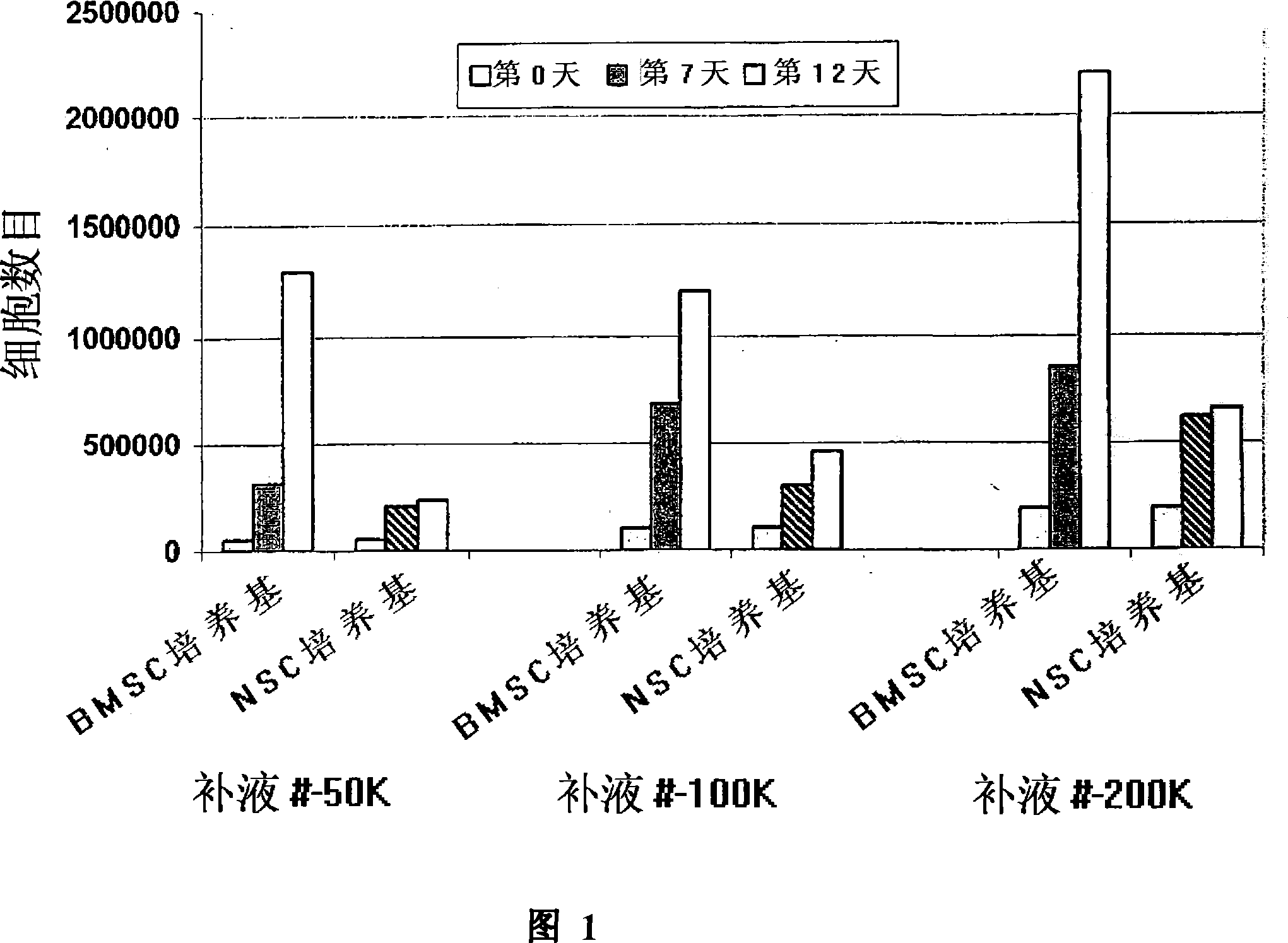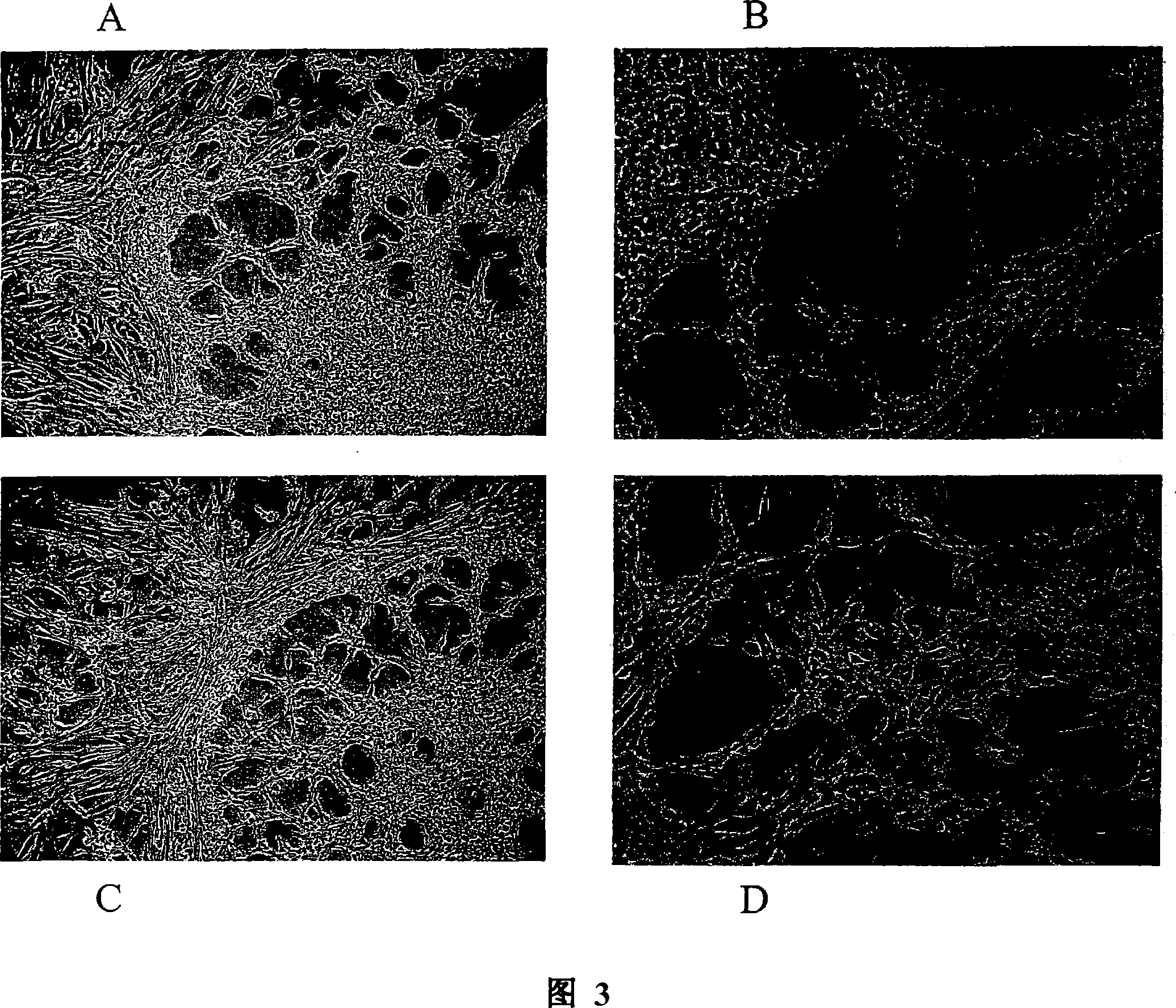Compositions and methods to culturing neural stem cells with bone marrow stromal cells
A technology of bone marrow stromal cells and neural stem cells, which can be used in bone/connective tissue cells, animal cells, tissue culture, etc., and can solve problems such as dangerous side effects
- Summary
- Abstract
- Description
- Claims
- Application Information
AI Technical Summary
Problems solved by technology
Method used
Image
Examples
Embodiment 1
[0144] Example 1: BMSCs are used as trophoblast cells for the cultivation and expansion of NSCs
[0145] The cultivation of NSCs is challenging because they require growth factors and special substrates to enhance their growth rate and expansion. For growth factors, the addition of exogenous LIF to serum-indeterminate medium containing FGF and / or EGF significantly enhanced NSC expansion. As discussed elsewhere herein, incorporation of exogenous LIF and coating of the culture dish further increased the level of expansion of NSCs while maintaining their pluripotency.
[0146] Bone marrow stromal cells (BMSCs) can be readily obtained and expanded in culture to a substantially homogeneous cell population. In addition, BMSCs also secrete several trophic factors that can promote the growth of NSCs. Therefore, this example illustrates that BMSCs can be used as supporting cells for the expansion of NSCs in a co-culture system.
[0147] Now, the materials and methods used in the exp...
Embodiment 2
[0183] Example 2: Removal of BMSCs from BMSC and NSC co-cultures
[0184] Cells in BMSC and NSC co-cultures can be isolated by incubating the co-culture with a murine anti-human CD13 antibody (positive on BMSC and negative on NSC). Using magnetic beads linked to pan mouse IgG, BMSCs were able to be isolated from NSCs. Unbound cells representing NSCs were analyzed by FACS or returned to culture medium. For FACS analysis, different BMSC marker antibodies (mouse anti-human CD105) were used to detect infected BMSCs, while mouse anti-human CD133 was used to detect NSCs.
[0185] BMSCs were put into 6-well culture dishes, 150,000 cells / well, and allowed to adhere overnight in BMSC medium. NSCs (THD-hWB-015+LIFP17) grown in culture were harvested and resuspended to disrupt neurospheres. The BMSC medium was removed from the BMSC culture and the harvested NSCs were plated on BMSCs (75,000 cells / well) in NSC medium (with EGF and FGE, with or without LIF). Co-cultures were grown in N...
Embodiment 3
[0192] Co-culture scale-up and enhanced NSC expansion using minimal amount of BMSC as feeder layer
[0193] In this experiment, co-cultures were expanded into T75 tissue culture flasks. BMSCs (donors BM-022, P1 and BM-024, P1 ) were placed in BMSC medium at two different seeding densities of approximately 2.5e5 or 5.0e5 / bottle. Two days later, cells were washed with NSC medium, and 5.0e5 NSCs (THD-015, P14) were placed on top of BMSCs in 15 ml complete NSC medium. The cells were co-cultured for 15 days, and the cells were replaced with 50% fresh medium every other day or two. After 15 days, cells were harvested by trypsinization. Larger BMSCs and smaller NSCs were counted on a hemacytometer. BMSCs were removed as in Example 2 as described elsewhere herein. Suspend the cells to 5×10e7 / ml and incubate with anti-human CD13 antibody for 15 minutes on ice. Cells were washed once and then incubated with washed Pan mouse IgG Dyna-beads for 30 minutes. Bead-bound cells are separ...
PUM
 Login to View More
Login to View More Abstract
Description
Claims
Application Information
 Login to View More
Login to View More - R&D
- Intellectual Property
- Life Sciences
- Materials
- Tech Scout
- Unparalleled Data Quality
- Higher Quality Content
- 60% Fewer Hallucinations
Browse by: Latest US Patents, China's latest patents, Technical Efficacy Thesaurus, Application Domain, Technology Topic, Popular Technical Reports.
© 2025 PatSnap. All rights reserved.Legal|Privacy policy|Modern Slavery Act Transparency Statement|Sitemap|About US| Contact US: help@patsnap.com



